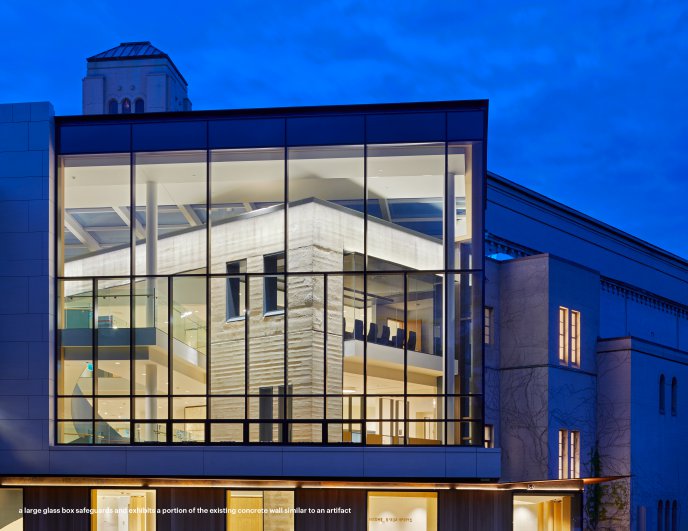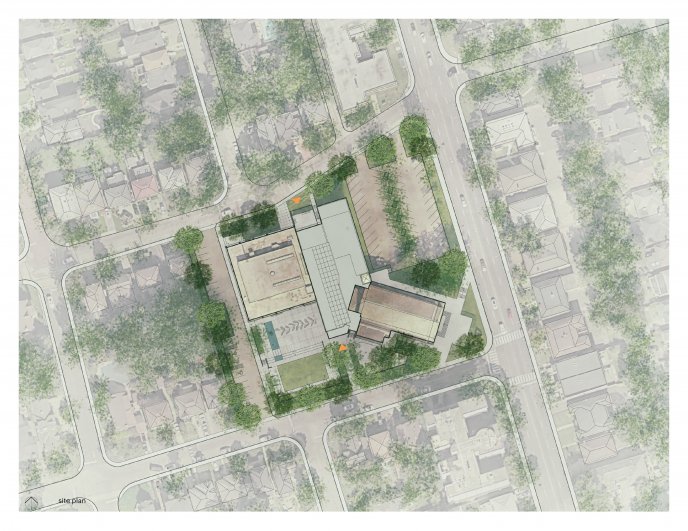Location: Toronto, Ont.
Architect: Diamond Schmitt Architects
OAA Design Excellence Awards Finalist
Built in Romanesque Revival style, Toronto synagogue Holy Blossom’s house of worship was the first institutional building in Canada to employ the use of board-formed concrete in 1938. It was followed by a Modernist house of learning in the 1960s. This addition shifted the architectural centre, causing a maze-like experience. In 2003, with the congregation looking to the future, the project demanded the restoration of the historic buildings and a comprehensive renewal—one that unifies Holy Blossom, celebrating the congregation’s Jewish identity.
Bringing clarity to the circulation and orientation of the campus led to the transformation of its latent spaces. Positioned between house of learning and house of worship, a new light-filled atrium rises four floors, complete with a helical staircase and a vast skylight above. Here, architecture emerges by converting marginal into critical, finding a house of gathering. This architectural gesture transforms the experience of the campus; it provides a place for celebratory and communal events akin to a living room, and it also connects the two existing buildings as well as other spaces, turning Holy Blossom into a comprehensive campus.
This renewal project, as a complete renovation, upgraded the entire building and life-safety systems on the campus. Targeting LEED Silver, sustainable best practices were implemented to ensure the energy efficiency and longevity of Holy Blossom in the future. The new central atrium prominently features a three-story, 610-sf living wall biofilter, incorporating over 600 plants and more than 20 species. Certain species were chosen for their significance in Jewish traditions (wheat, barley, grapes, figs, olives, dates, etc.).
The project transformed the experience of the campus, restoring its historic buildings and resolving its navigation challenges. The reinforced concrete-frame resulted in an uninterrupted, column-free new atrium. This generous space visually and physically links the congregation’s houses of worship and learning. It is designed to host a variety of events—a powerful symbol of community, continuity, and renewal. A complete renovation, the project also found space for a library, a chapel, a youth lounge, a demonstration kitchen, café, gallery, donation centre, Judaic shop, lifecycle room, and offices.
 Image Credit: Tom Arban Photography
Image Credit: Tom Arban Photography
 Image Credit: Tom Arban Photography
Image Credit: Tom Arban Photography

Architectural Credit: Diamond and Schmitt Architects